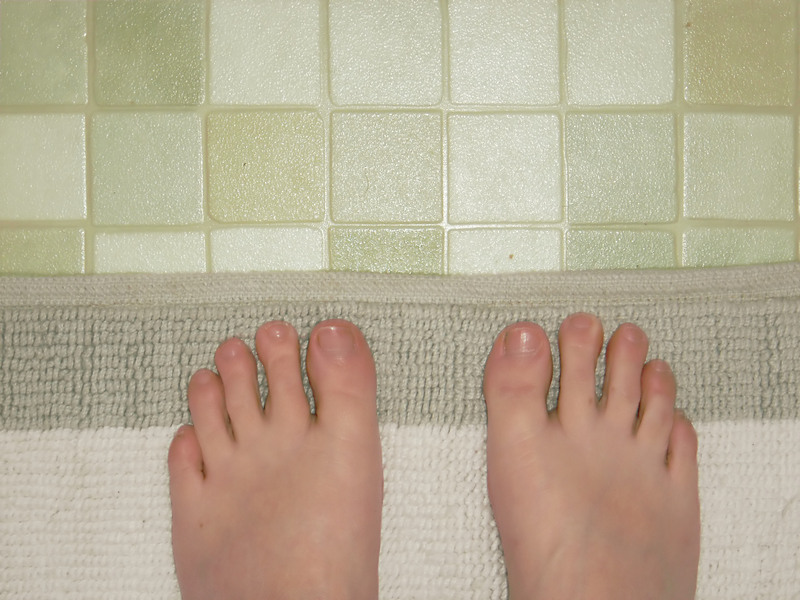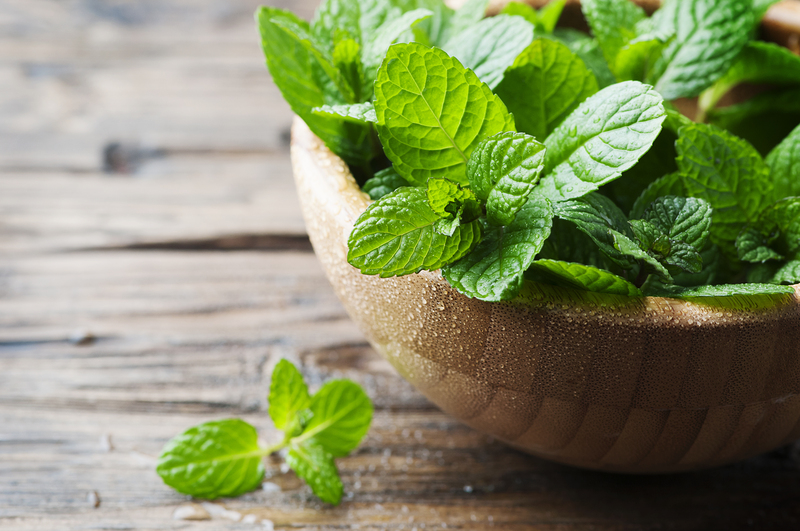Achieve Spotless Window Sills by Removing Mould
Posted on 10/09/2025
Achieve Spotless Window Sills by Removing Mould: A Comprehensive Guide
Mould growth on window sills is not just an eyesore; it can affect your health and reduce the lifespan of your windows and property. Luckily, you can achieve spotless window sills by removing mould with the right techniques, tools, and consistent maintenance. In this thorough guide, we'll explore multiple ways to eradicate mould from window sills, prevent its return, and maintain a healthy living environment.

Understanding the Problem: Why Mould Develops on Window Sills
Mould thrives in moist, poorly ventilated areas. Window sills, particularly those in bathrooms and kitchens, are prime spots because of:
- Condensation: Temperature differences between indoors and outdoors create moisture on windows.
- Humidity: High humidity levels provide the perfect breeding ground for mould.
- Poor air circulation: A lack of airflow allows moisture to stick around and promotes mould spores to settle.
- Neglect: Infrequent cleaning allows dust and organic debris to accumulate, feeding mould colonies.
This means addressing mould is not just about aesthetics but also about maintaining indoor air quality and preserving the stability of your windows and woodwork.
Common Types of Mould Found on Window Sills
Several types of mould can find their way onto your window sills, including:
- Cladosporium: Black or green, often found on wooden or painted surfaces.
- Aspergillus: Can be green, white, or yellow, and grows on damp building materials.
- Penicillium: Appears blue or green and loves organic material.
- Stachybotrys chartarum (Black mould): Rare, but potentially dangerous, appearing as slimy and black patches.
Regardless of the type, any mould presence should be tackled promptly, especially if you want to achieve clean, spotless window sills.
Health Risks Associated with Mouldy Window Sills
Exposure to mould spores can cause a variety of health issues, including:
- Respiratory problems: Asthma attacks, coughing, throat irritation, and nasal congestion.
- Allergic reactions: Sneezing, watery eyes, and skin rashes.
- Worsening of existing conditions: Those with immune suppression may experience more severe symptoms.
Therefore, removing mould from window sills is imperative, especially in homes with children, seniors, or individuals with allergies.
Step-By-Step Guide: Removing Mould from Window Sills
Step 1: Preparation is Key
- Wear protective gear--gloves, a mask, and goggles--to avoid contact with mould spores.
- Open windows (if possible) to improve ventilation and prevent spores from spreading through your house.
- Lay down old towels or plastic sheets beneath the window to catch drips and debris.
Step 2: Select the Right Cleaning Solution
- White vinegar: Highly effective at killing many mould types. Use full-strength in a spray bottle.
- Baking soda: Gentle abrasive and deodorizer; mix with water to create a paste.
- Hydrogen peroxide (3%): Destroys mould's cell structure and is ideal for non-wooden surfaces.
- Commercial mould removers: Available at most hardware stores but always follow the manufacturer's instructions.
- Avoid using bleach on porous surfaces. While bleach works on non-porous materials, it can drive mould further into wood or paint, leading to regrowth.
Step 3: Scrubbing Away the Mould
- Spray your chosen solution liberally over the affected area and let it sit for at least 10 minutes.
- Use a stiff-bristled brush or non-abrasive scouring pad to scrub the mould away, paying particular attention to corners and cracks.
- For stubborn patches, apply baking soda paste, leave for 15 minutes, then scrub again.
- Wipe clean with a microfibre cloth or damp paper towels to remove residual mould and cleaning residue.
Step 4: Rinse and Allow to Dry
- Use a clean, damp cloth to rinse off any cleaning products from the window sill.
- Dry thoroughly with a fresh towel or allow to air dry in sunlight. Mould needs moisture to thrive, so complete drying is essential!
Step 5: Dispose of Cleaning Materials Safely
- Seal gloves, paper towels, and other disposable items in a plastic bag and throw away.
- Wash reusable cleaning tools and clothes in hot water with detergent.
Natural Remedies to Remove Mould from Window Sills
If you prefer a chemical-free approach, here are some eco-friendly mould-cleaning methods:
- Lemon juice: Its acidity helps break down mould colonies and leaves a fresh scent.
- Tea tree oil: Add a teaspoon to a cup of water; spray onto window sills as a natural fungicide.
- Grapefruit seed extract: Few drops in water act as a powerful mould remover.
Apply, let sit, and scrub as usual. These methods are ideal for households sensitive to harsh chemicals and work well for regular maintenance to keep window sills spotless.
How to Prevent Mould from Returning to Your Window Sills
Improve Ventilation
- Open windows regularly to let in fresh air.
- Install trickle vents or extractor fans in rooms prone to dampness, especially kitchens and bathrooms.
- Consider using a dehumidifier to keep humidity levels below 60%.
Eliminate Moisture
- Always wipe down condensation from windows and sills each morning during cold months.
- Fix leaky windows or seals to prevent water ingress.
- Ensure window coverings (curtains/blinds) allow air to circulate and don't trap moisture.
Regular Cleaning Routines
- Dust and wipe sills weekly with a mild cleaning solution.
- Check for any new signs of mould or moisture build-up, and act early if spotted.
- Seal gaps or cracks in window sills with appropriate filler to deny mould places to start growing.
Repair and Restoration after Mould Removal
Sometimes, extensive mould damage may leave your window sills stained or weakened. After you remove the visible mould:
- Sand off stains on wooden sills with fine-grit sandpaper.
- Repaint or refinish sills to protect against future growth.
- Replace silicone caulk or sealant if it shows signs of mould, as it's difficult to clean.
- In severe cases, replace damaged sections or the entire window sill.
Addressing cosmetic and structural damage will ensure you achieve spotless, attractive window sills that add value and comfort to your space.
Essential Tools and Supplies for Mould-Free Window Sills
- Protective gloves, goggles, and a face mask
- Spray bottle (for cleaning solutions)
- Microfibre cloths and paper towels
- Bristle brushes and soft sponges
- Non-toxic mould removal products (or natural alternatives)
- Sandpaper, paint, and filler (for repairs)
Stocking up on these supplies will make your window sill cleaning efficient and safe each time mould reappears.
When to Call a Professional
While small, isolated patches can usually be managed by homeowners, some situations require professional remediation, such as:
- Mould that covers an area larger than 1 square metre
- Persistent or recurring mould despite repeated cleaning
- Mould growth inside walls, insulation, or difficult-to-reach areas
- Signs of structural damage or rot
- Health issues in household members following mould exposure
A qualified specialist will assess the situation, safely remove mould, and suggest effective measures to prevent repeat infestations, ensuring your window sills stay spotless and mould-free for good.
Frequently Asked Questions about Window Sill Mould Removal
- How often should I clean my window sills to prevent mould?
At least once a week in humid seasons or climates. Quick action after noticing condensation will also help. - Can I paint over mouldy window sills?
No. Always remove all traces of mould before painting or refinishing, as painting over it simply traps the problem and allows it to return. - Is vinegar safe for painted or varnished window sills?
Yes, but always spot-test first to ensure it doesn't damage the finish. - What if the mould smell lingers?
Use a dehumidifier, air purifier, or open windows to remove spores from the air. Place bowls of baking soda or activated charcoal nearby to absorb odours.

Long-Term Maintenance Tips for Spotless Window Sills
- Inspect windows for leaks and condensation every season.
- Maintain good airflow with regular use of fans and by keeping window dressings open during the day.
- Apply a protective sealant to finished surfaces for extra protection against moisture.
- Act at the first sign of trouble. The sooner you spot and clean up any growth, the less likely it is to return and the better your indoor environment will be.
Conclusion: Enjoy Clean, Spotless, and Healthy Window Sills
There's no need to live with unsightly, unhealthy mould on your windows. With a combination of effective cleaning techniques, routine maintenance, and a keen eye for trouble, it is entirely possible to achieve spotless window sills and eliminate mould for good. Not only does this enhance the beauty of your home, but it also protects the health and well-being of everyone inside.
Apply these expert tips on removing mould from window sills, and you'll enjoy bright, fresh, and inviting windows all year round--free from the worries of mould and the trouble it brings. For persistent issues, don't hesitate to call in professionals. Your home deserves the very best in cleanliness and care!




